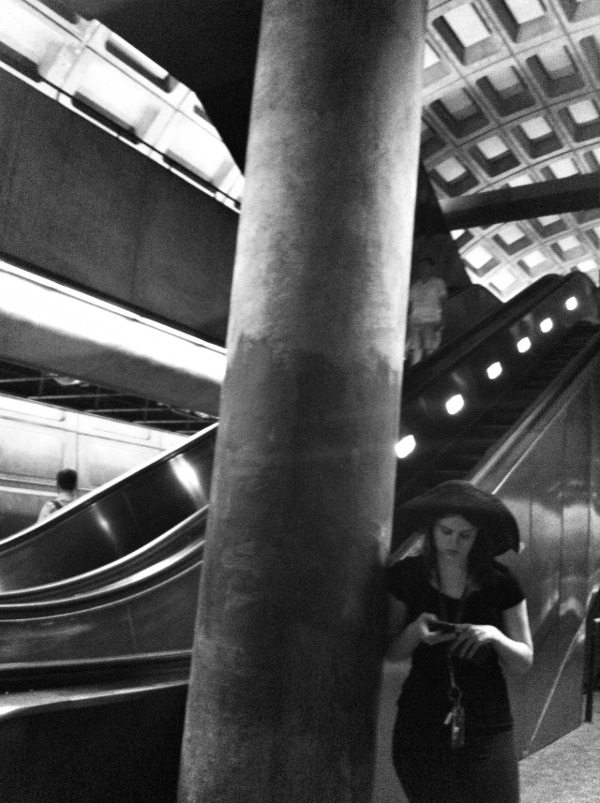Sailing Around Cape Horn
Sailing Around Cape Horn Read More »
"The Homeostat," Doctor Sparke explained, "is about the size of a thin pound box of candy, is enclosed in a titanium case, and is powered by a well-shielded store of nuclear material. Built chest-high into the oceanaut's suit, it is crammed with hundreds of miniature parts much too complicated for me to describe. The Homeostat becomes the vital 'organs' of the oceanaut by means of a plastic tube that extends from the top and is inserted into and coupled to an opening made in the throat just below the Adam's apple. An open system through which water constantly flows, the Homeostat provides the oceanaut with food manufactured from plankton, and oxygen and fresh water derived from the sea. At the same time it eliminates CO2 and other wastes as it maintains a steady flow of vitamins, of coco de mono, a South American drug which checks the growth of hair, and also a psychic energizer that enables the oceanaut to function eighteen hours without tiring."
Louis Wolfe, Journey of the Oceanauts (1968)
At the beginning of the war, two British chemists, V. E. Yarsley and E. G. Couzens, prophesied with surprising accuracy and quaintly utopian innocence what middle-class childhood in the 1970s would be like. “Let us try to imagine a dweller in the ‘Plastic Age,’†they wrote in the British magazine Science Digest.
This creature of our imagination, this ‘Plastic Man,’ will come into a world of colour and bright shining surfaces, where childish hands find nothing to break, no sharp edges or corners to cut or graze, no crevices to harbour dirt or germs, because, being a child his parents will see to it that he is surrounded on every side by this tough, safe, clean material which human thought has created. The walls of his nursery, all the articles of his bath and certain other necessities of his small life, all his toys, his cot, the moulded perambulator in which he takes the air, the teething ring he bites, the unbreakable bottle he feeds from . . . all will be plastic, brightly self-coloured and patterned with every design likely to please his childish mind.
Here, then, is one of the meanings of the duck. It represents this vision of childhood—the hygienic childhood, the safe childhood, the brightly colored childhood, in which everything, even bathtub articles, have been designed to please the childish mind, much as the golden fruit in that most famous origin myth of paradise “was pleasant to the eyes†of childish Eve. Yarsley and Couzens go on to imagine the rest of Plastic Man’s life, and it is remarkable how little his adulthood differs from his childhood. When he grows up, Plastic Man will live in a house furnished with “beautiful, transparent, glass-like materials in every imaginable form,†he will play with plastic toys (tennis rackets and fishing tackle), he will, “like a magician,†be able to make “what he wants.†And yet there is one imperfection, one run in this nylon dream. Plastic might make the pleasures of childhood last forever, but it could not make Plastic Man immortal. When he dies, he will sink “into his grave hygienically enclosed in a plastic coffin.†The image must have been unsettling, even in 1941; that hygienically enclosed death too reminiscent of the hygienically enclosed life that preceded it. To banish the image of that plastic coffin from their readers’ thoughts, the utopian chemists inject a little more technicolor resin
into their closing sentences. When “the dust and smoke†of war had cleared, plastic would deliver us “from moth and rust†into a world “full of colour . . . a new, brighter, cleaner, more beautiful world.â€
-- Donovan Hohn, "Moby-Duck, or, the Synthetic Wilderness of Childhood," Harper's Magazine, January 2007.
 ASL Open Mic 12/29/12 | Chowhound | Corcoran Gallery of Art | Food: DonRockwell.com | Freer and Sackler Galleries | Friday Morning Music Club | Great Food Shopping on DC Metro? | Hirshhorn Museum | Library of Congress | National Air and Space Museum | National Arboretum | National Archives | National Gallery of Art | La Rabbia (Pasolini) 12/29/12 | Smithsonian American Art Museum | United States Holocaust Memorial Museum | United States Senate Dining Services Website | Washington CityPaper
ASL Open Mic 12/29/12 | Chowhound | Corcoran Gallery of Art | Food: DonRockwell.com | Freer and Sackler Galleries | Friday Morning Music Club | Great Food Shopping on DC Metro? | Hirshhorn Museum | Library of Congress | National Air and Space Museum | National Arboretum | National Archives | National Gallery of Art | La Rabbia (Pasolini) 12/29/12 | Smithsonian American Art Museum | United States Holocaust Memorial Museum | United States Senate Dining Services Website | Washington CityPaper